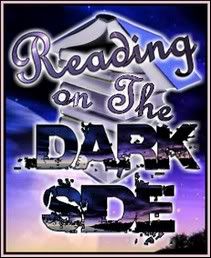 Today marks the start of the Harvest season or Lammas (Lughnasadh). We call these days the dog days of summer although this season here in Kentucky has been a bit more like fall. However much of the earth is still dry and parched, but the yellows and oranges and browns that greet us in Autumn are not far away. Apples are beginning to ripen in the trees, summer veggies are picked and the corn is tall, green and lush. Lughnasadh is Gaelic for this festival marking the beginning of the harvest season that was historically observed throughout Ireland, Scotland and the Isle of Man. Originally it was held on 31 July–1 August, or approximately halfway between the summer solstice and autumn equinox. However, over time the celebrations shifted to the Sundays nearest this date. Lughnasadh is one of the four Gaelic seasonal festivals; along with Samhain, Imbolc and Beltane. It corresponds to other European harvest festivals, such as the Welsh Calan Awst and the English Lammas.
Today marks the start of the Harvest season or Lammas (Lughnasadh). We call these days the dog days of summer although this season here in Kentucky has been a bit more like fall. However much of the earth is still dry and parched, but the yellows and oranges and browns that greet us in Autumn are not far away. Apples are beginning to ripen in the trees, summer veggies are picked and the corn is tall, green and lush. Lughnasadh is Gaelic for this festival marking the beginning of the harvest season that was historically observed throughout Ireland, Scotland and the Isle of Man. Originally it was held on 31 July–1 August, or approximately halfway between the summer solstice and autumn equinox. However, over time the celebrations shifted to the Sundays nearest this date. Lughnasadh is one of the four Gaelic seasonal festivals; along with Samhain, Imbolc and Beltane. It corresponds to other European harvest festivals, such as the Welsh Calan Awst and the English Lammas.Lammas (Lughnasadh) is mentioned in some of the earliest Irish literature and is believed to have pagan origins. The festival itself is named after the god Lugh. It involved great gatherings that included religious ceremonies, ritual athletic contests (most notably the Tailteann Games), feasting, matchmaking and trading. There were also visits to holy wells. According to folklorists, evidence shows that the religious rites included an offering of the first of the corn, a feast of the new food and of bilberries, the sacrifice of a bull and a ritual dance-play.
In Irish mythology, the Lughnasadh festival is said to have been begun by the god Lugh (modern spelling: Lú) as a funeral feast and athletic competition (see funeral games) in commemoration of his mother (or foster-mother) Tailtiu. She was said to have died of exhaustion after clearing the plains of Ireland for agriculture. Tailtiu may have been an earth goddess who represented the dying vegetation that fed mankind. The funeral games in her honor were called the Óenach Tailten or Áenach Tailten (modern spelling: Aonach Tailteann) and were held at Tailtin in what is now County Meath. The Óenach Tailten was similar to the Ancient Olympic Games and included ritual athletic and sporting contests. The event also involved trading, the drawing-up of contracts, and matchmaking. At Tailtin, trial marriages were conducted, whereby young couples joined hands through a hole in a wooden door.The trial marriage lasted a year and a day, at which time the marriage could be made permanent or broken without consequences. A similar Lughnasadh festival, the Óenach Carmain, was held in what is now County Kildare. Carman is also believed to have been a goddess, perhaps one with a similar tale as Tailtiu. After the 9th century the Óenach Tailten was celebrated irregularly and it gradually died out.
Lughnasadh and Lughnasadh-based festivals are held by some Neopagans, especially Celtic Neopagans. However, their Lughnasadh celebrations can be very different despite the shared name. Some try to emulate the historic festival as much as possible, while others base their celebrations on many sources, the Gaelic festival being only one of them. Neopagans usually celebrate Lughnasadh on 31 July–1 August in the Northern Hemisphere and 31 January–1 February in the Southern Hemisphere, beginning and ending at sunset. Some Neopagans celebrate it at the astronomical midpoint between the summer solstice and autumn equinox (or the full moon nearest this point). In 2013, this is on 7 August in the Northern Hemisphere.





No comments:
Post a Comment